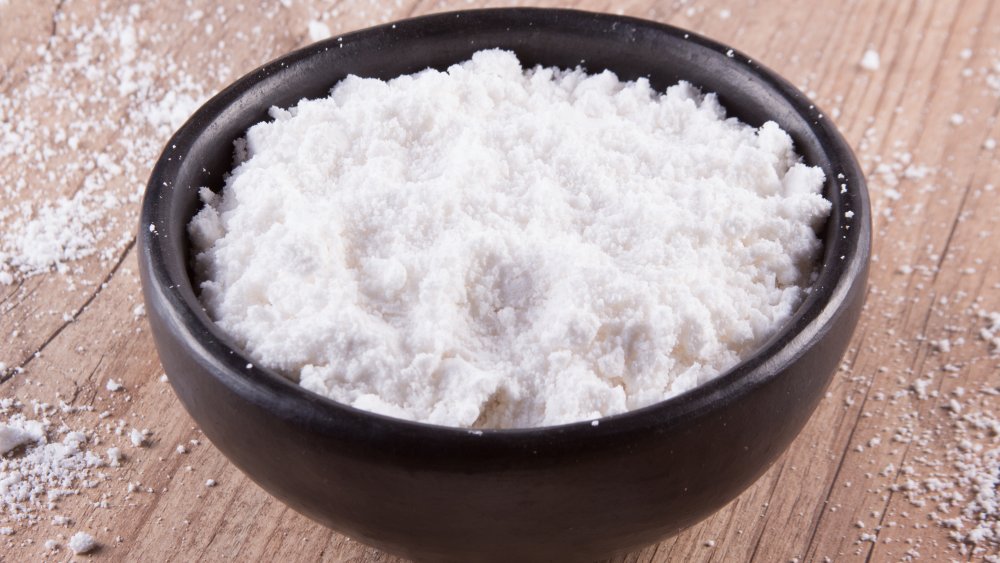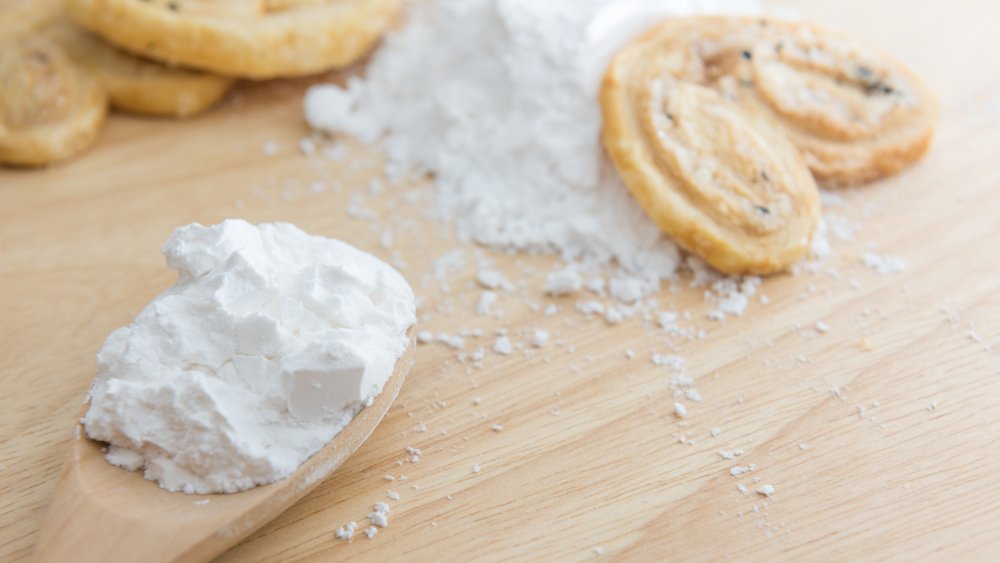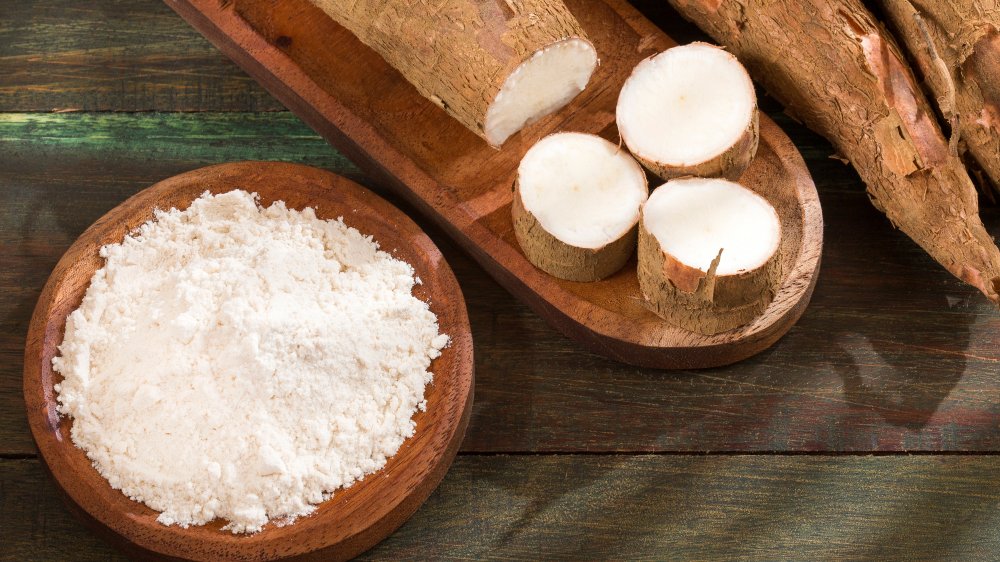Here's What You Can Substitute For Tapioca Flour
Your most recent encounter with tapioca might have been through boba, the chewy balls that sit at the bottom of the now-ubiquitous bubble tea. But tapioca flour, which comes from crushed cassava root, is a versatile ingredient that has the ability to put a spring in the step of wheat-free cakes, cookies, and breads, making it an indispensable part of gluten-free baking.
Tapioca flour works hand in hand with grated cheese to shine in Brazilian Pao de Queijo, a light, puffy, yet chewy cheese roll. Tapioca flour's ability to absorb water also makes it a great thickener for puddings, gravies, sauces, and soups, making it a good substitute for cornstarch, arrowroot starch, and potato starch. (via From the Larder).
On the other hand, what if your recipe calls for some tapioca flour, but you're fresh out?
Cornstarch and rice flour are substitutes for tapioca flour
Like many ingredients, you can't completely do away with tapioca flour, but it shares certain qualities with other ingredients, making it less of a challenge to substitute. One gluten-free ingredient that may be used as a substitute for tapioca flour includes cornstarch, which is commonly found and may already be sitting in your pantry.
The Spruce Eats says cornstarch can be swapped with tapioca flour on a 1:1 ratio, but Healthline and The Minimalist Baker warn that cornstarch is a more powerful thickening agent and, as such, less will be needed to do the work; so if a recipe calls for two tablespoons of tapioca flour, just one tablespoon of cornstarch will do the trick.
Like cornstarch, rice flour is a powerful thickener that will do the job of tapioca flour for less, and in a similar way, Healthline says you'd only need a tablespoon of rice flour to the work of two tablespoons of tapioca flour.
There are other flour substitutes for tapioca flour
Other flours that will work as substitute thickeners with a 1:1 ratio with tapioca flour include arrowroot flour, potato starch, and cassava flour, the latter of which is a cousin to tapioca flour. While cassava flour is made of the entire root, tapioca is made with the starchy sections of the plant. Both can be evenly swapped, but do bear in mind that cassava has more fiber — so even if the substitution ratio is 1:1, you will need to do away with other additional thickeners. Cassava also has a nuttier flavor, which may not be appropriate for the dish you are preparing.
If you're not avoiding gluten, sites like The Spruce Eats also recommend wheat flour as an acceptable substitute for tapioca flour, and wheat is able to do the same job as tapioca on a 1:1 basis. But it also warns that unlike tapioca flour, adding wheat can make a dish more cloudy, so cornstarch may be a better choice. Also, if you are making a pie filling and are planning to freeze it, The Spruce Eats notes that both flour and cornstarch tend to separate when temperatures drop, and as such, only tapioca or arrowroot flour (if you've got it) will do.


